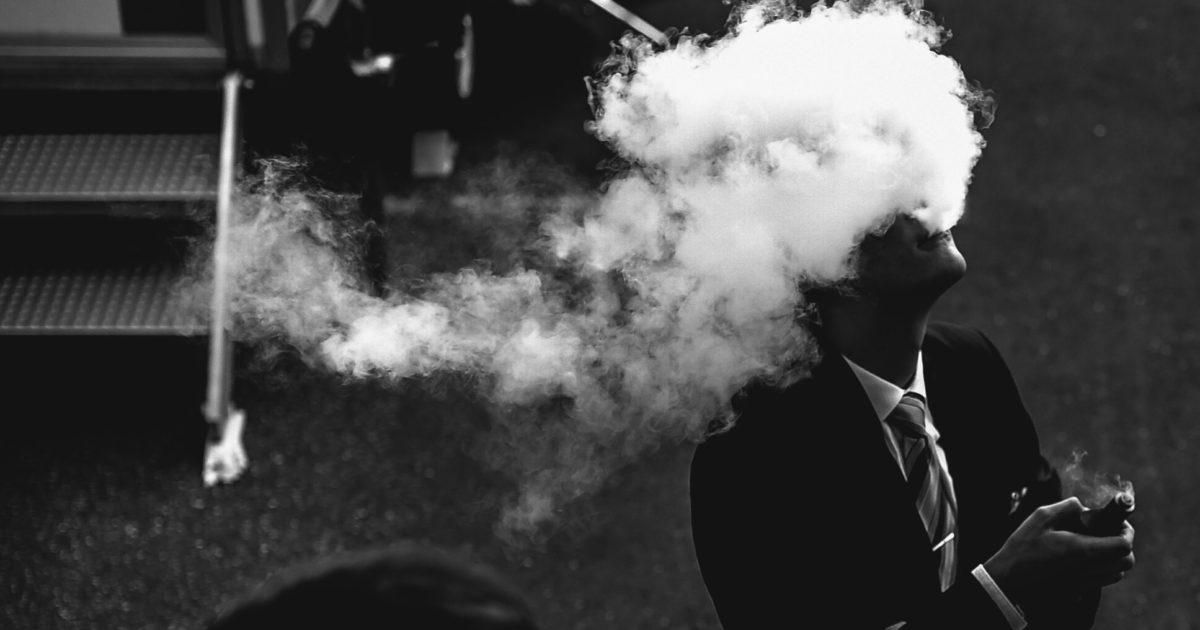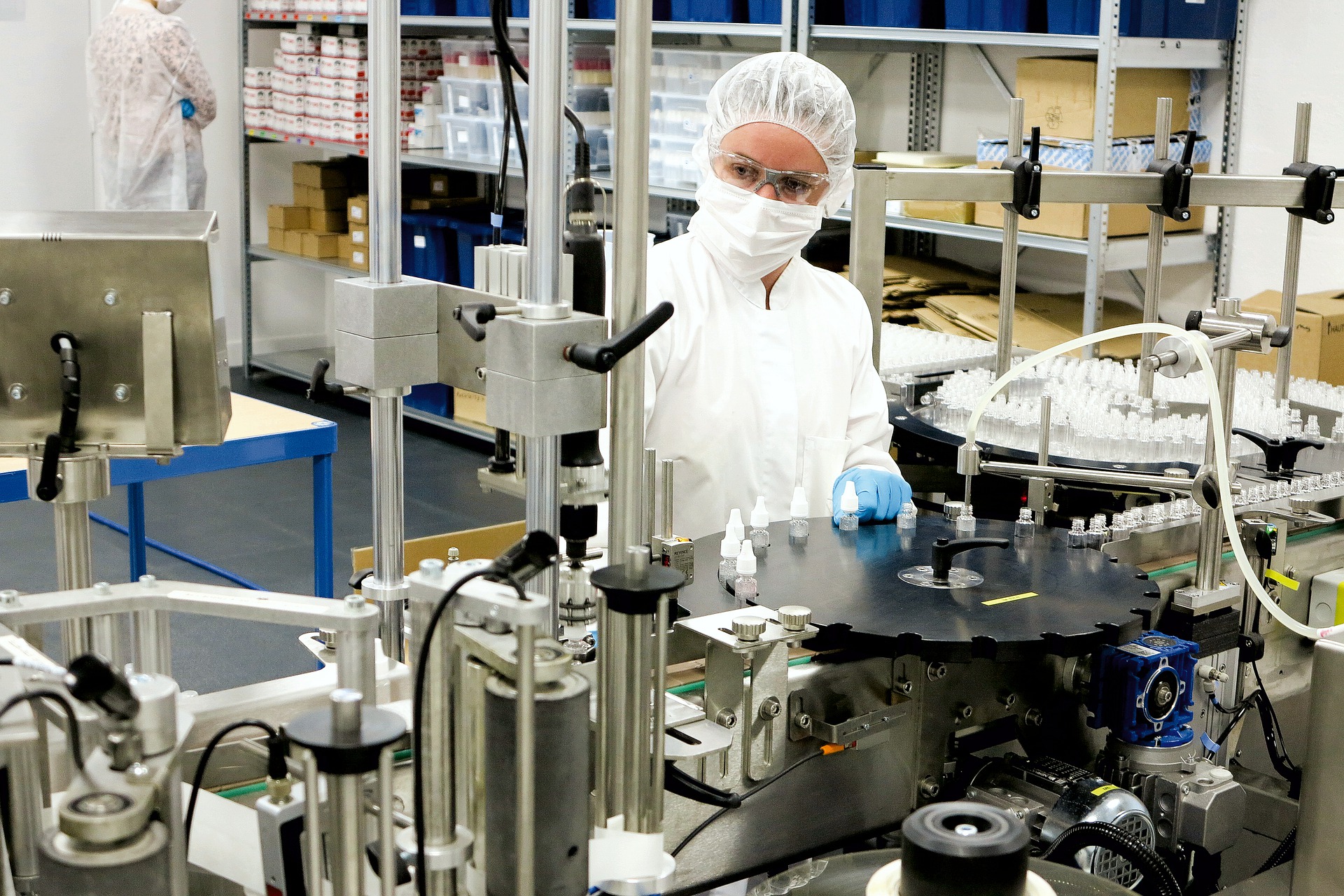Over half a billion smokers live in Asia, and Asian countries have some of the highest per capita smoking rates – and some of the highest numbers of smoking-related deaths – in the world.
Given the staggering damage to its citizens’ health that smoking is responsible for you’d think that regional governments would be eagerly embracing any less harmful alternatives such as vapes and heat not burn (HNB) devices to encourage people to wean themselves off conventional tobacco products.
But this is sadly not the case – in fact, aside from a handful of more pragmatic and socially responsible governments in the region, the reverse is the reality in most Asian countries where legislators, influenced by flawed and evidence-averse hysteria from so-called ‘experts’, have imposed or are planning to impose ever-more repressive and draconian restrictions on the importation, sale, promotion, use and in some cases even research into less harmful alternatives to conventional tobacco products.
The reasons behind this are greatly debated, and there is no simple answer. Protecting government revenues and in some cases government tobacco monopolies is clearly a prime suspect. The pernicious influence of WHO on Health Departments, the massive funding provided by Big Pharma, Bloomberg and similar vested interests to individuals, institutions and activists lobbying against less harmful products (LHP) is another.
Misinformation campaigns, clickbait headlines, refusal to acknowledge or debate the evidence and facts and disseminating outright lies are some of the hallmarks of this campaign, and the ultimate losers are the millions upon millions of smokers who are being denied access to less harmful alternatives and whose lives and human rights are being sacrificed on the altar of Big Pharma’s bottom line.
To one degree or another, this is the situation in most countries throughout the Asia Pacific.
Some of the Asian countries with the highest smoking rates and their attitudes towards LHP are listed below from worst to most tolerant with a few comments outlining where they stand now and in what direction they appear to be moving.
Singapore
Not only are the current crop of LHP banned in this ‘progressive’ country, the regulation also bans ‘all future related technology’. Hardly the most forward-looking stance for a country that prides itself on its scientific and technological achievements. Cigarettes are highly regulated, but relatively cheap and widely available and Singaporeans have one of the highest per capita smoking rates in the region. Visitors – including transit passengers – caught at the airport with a vape or HNB device face prosecution and imprisonment, and in any case will be put on a list for scrutiny on any return to the country and will have their devices confiscated. There is no indication that this is going to change anytime soon, the government has shut down debate and there is no avenue for consumers, academics or the media to discuss the issue.
Thailand
Thinking of visiting Thailand for a well-earned relaxing break? Leave your LHP behind. The maximum penalty for being caught with a vape or HNB is 10 years in prison. In terms of legal repercussions, you’d be better off with a syringe full of heroin (no, I’m not advocating this). That said, ‘This is Thailand’ (TIT), as the local euphemism goes. Depending on where you are, and in some cases, which side of the street you are on, if you are caught with an LHP you risk being collared and ‘fined’ several thousand dollars, imprisoned, deported – or ignored. Enforcement is patchy at best, although tourist areas are usually well-policed as foreign vapers are an easy mark for a spot of ‘tea money’. Nonetheless, its quite common to see Thais vaping. The actual regulation defines possession of an LHP as ‘economic sabotage’, meaning that as LHP are not under any excise bracket and therefore there is no import duty paid on devices, if its in the country its been smuggled in and you are complicit. There is an active and well-supported coalition of consumer groups lobbying hard for a change in the law and some optimism that progress can be made, with reported cross-party support for repealing the ‘ban’ and imposing some form of regulation and a rumour that tourists might be allowed to bring their devices into the country for personal use during their visit. It remains to be seen if Thailand Tobacco Monopoly (the clue is in the name) and other vested interests manage to derail these efforts to protect their market shares and profits.
India
The government has just imposed a wide-ranging ban on LHP in defiance of several court rulings against it. As with all the other countries enforcing or proposing bans, no factual evidence has been supplied to support this position, only fear-mongering and disinformation. In keeping with most other countries in the region, a ‘lack of domestic research’ is one of the ‘compelling’ reasons offered to justify a ban. India has decided that the best way to address this lack is to make it illegal for any institution, academic or researcher to conduct any research into LHP. Job done. In a country where millions of citizens die or suffer from tobacco-related illnesses every year, this is hardly an enlightened approach to tobacco control. However, a xenophobic business environment and well-entrenched tobacco lobbies work against LHP as it is seen as a ‘foreign’ technology with no domestic manufacturing base to protect. So better to protect Indian tobacco companies rather than actually help tobacco users it seems. The fact that the Indian government maintains a 28% stake in ITC, India’s de facto tobacco monopoly may also have some bearing on its decision to ban potentially competitive alternatives. It should also be noted that conventional cigarettes are not the products of choice for most Indian tobacco users, with various other forms, such as bidis and particulalrly oral products such as paan and gutka, being the most popular. If ever a country could and should embrace SNUS, India is it. However, the flawed WHO mantras are loudly and effectively wielded by the Health Department, members of whom were proud to host the FCTC COP8 in Delhi in 2016, and legislators here, as elsewhere, tend to think of their health bureaucrats in much the same way most of us think of doctors, shining beacons of moral rectitude and wise advice, despite the fact that what they are being told and the actions they have now taken on this ‘advice’ will inevitably result in the unnecessary and preventable premature deaths of hundreds of millions of Indians. Here, take this pill, it will help with the pain…
Hong Kong
Vapes containing nicotine have been banned in Hong Kong for several years now. However, despite repeated pressure on the government to impose age-restrictions on the sale of non-nicotine containing vapes, it ignored the issue until last year when, surprise surprise, it was revealed that growing numbers of children were buying and using vape devices – which were on sale completely legally and unregulated – across the country. Result? Carrie Lam, the Chief Executive, announced that she would be pressing for a complete ban on all LHP, including HNB which has become extremely popular with Hong Kong’s smokers (an estimated 20% of smokers in the country now use HNB regularly if not exclusively), despite not being available legally because it has not got an excise tax classification and therefore the sticks (not the devices) can’t be imported legally into the country, a situation anti-smoking campaigners led by Sophie Chan of the ironically named COSH (Council on Smoking and Health) are keen to see maintained. Again, the public and the legislature are being fed a diet of distortions and fact-free hysteria demanding an outright ban under the guise of ‘health advice’ from ‘experts’ who are as averse to assessing actual evidence as moles are to sunbathing. Short of seeing a few million Hong Kongers out on the streets demonstrating against a ban with vapes and HNB under their umbrellas for a few months, the best hope for a sensible outcome and for the health and rights of Hong Kong’s smokers to choose to use LHP is for the country’s legislators to look at the evidence and the facts and ignore the scaremongering distortions they are being subjected to on an almost daily basis.
Australia
While the Federal government has already imposed sweeping restrictions on LHP, including nicotine bans on retailed juices (although users can legally import nicotine for personal use to add to their liquids), some states have imposed outright bans on the importation, sale and use of LHP. This in a country where, despite having some of the highest tobacco taxes anywhere in the world, the smoking rate has levelled off over recent years. The ‘not on my watch’ mindset of health ministers towards proportionate regulation of LHP isn’t helping address the critical problems smokers have trying to quit, and neither is putting vapers in prison. The debate has been hijacked by a handful of extremely influential anti-smoking zealots whose nanny-state mentality, coupled with an unhealthy and unhelpful disregard for facts and evidence, is leading legislators down a slippery slope towards prohibition. Given that Australia considers itself to be a developed nation with highly prized democratic credentials, it seems amazing that it could be so blinkered as to ignore the compelling research in the UK, the EU, the US, Canada, New Zealand and other kindred nations that shows the benefits of proportionately regulating, if not actually endorsing, LHP as a pathway away from smoking and the consequent and well-documented reduction of per capita smoking rates this would help achieve.
Malaysia
Ban. No ban. Ban. No ban. Repeat ad nauseam. This is the Malaysian government’s stand on LHP up to now, with the caveat that the Health Department, heavily influenced by WHO and other vested interests, continues to whittle away at the segment based on its ‘possession’ of the ‘right’ to ‘control’ nicotine. The Health Department, clearly upset when the Department of Trade was coopted into the regulatory framework some years ago as it regards this as its exclusive territory, has waged war on vapers for years now. As a consequence, many vape shops have been forced out of business and the number of vapers is thought to have declined significantly, presumably drifting back to smoking in a country where over 50% of all cigarettes sold are illicit (smuggled) and tax unpaid. Malaysian juice makers, a key component of a once a thriving industry thought to be worth half a billion US dollars annually a few years ago, are looking to overseas markets to survive. HNB products are now available in Malaysia and are proving popular with smokers, which has upped the ante – and the rhetoric. There are a number of consumer groups active in the country, and while the number of vapers may have declined, with the appearance of HNB there is a compelling urgency for the government to finally come up with proportionate regulation that protects the rights and the choices of Malaysia’s citizens.
Philippines
LHP are widely available throughout the 7,107 islands (at high tide) that comprise the Philippine archipelago. Vaping caught on relatively early here, and there are vape shops in every shopping mall in most cities. But there is a strong lobby, purportedly funded by Bloomberg Foundation among others, to ban or heavily restrict the sale and use of LHP. Under the administration of the former President Benigno Aquino a law was passed banning e-cigarettes but this law was never enforced and, while it was never repealed, it remains shelved until now. The government continues to debate the segment, and as I write this it is in the middle of public hearings debating the tax structure to be imposed on LHP – basically leaning towards treating all LHP the same as tobacco products and imposing the same degree of extortionate ‘sin taxes’ on them. However, the Department of Health and its allies remain staunchly opposed to LHP, and they are not above spouting some utterly inane rhetoric in support of their cause. A recent example: anti-vaping advocate Dr. Maricar Limpin stated, on record, at a Philippine Senate hearing on September 5, 2019, that ‘Public Health England is being funded by tobacco companies”. Yeah, right. We know some good lawyers in Manila if anyone at PHE would like to take legal action on this, but really, with this level of nonsense being spouted and with limited options to expose the lies, its hard to see how a balanced debate is even possible here. However, there are a number of consumer and trade groups working to redress the balance and, despite a number of cities and provinces enacting some fairly harsh restrictions on where and how vapes can be sold, marketed and used, the mere fact that there is a debate on how to tax the segment implies that an outright ban is not what the government is currently seeking to impose.
Vietnam
Although having come to the party somewhat later as vaping has only recently become popular enough to appear on the radar here, unlike the majority of its neighbours Vietnam’s government has approached LHP from a somewhat different standpoint, seeking (at this stage) to regulate the segment based on evidence and facts rather than hysteria and uninformed opinion. This is a refreshing change from the usual stance adopted in the region, and, given the growing number of vape shops selling everything from brand name HNB devices and sticks from around the world (Russian sticks being the preferred option we are told) to knock-off JUUL pods and devices and everything in between – all smuggled into the country tax unpaid, it is also timely.
Indonesia
In a country with one of the highest smoking incidences in the world, embracing the right to access LHP is a no-brainer for those of us who can be bothered to study the evidence. While Indonesia is not a signatory to the FCTC, which relieves its Health Department from some of the biased rhetoric its members are exposed to, there are of course public health advocates expressing serious concern at the growth of the LHP segment in the country. In 2018, Indonesia implemented the highest possible taxes on LHP which at least gave them a legal foothold in the market despite restricting the vast majority of Indonesian smokers from being able to access the devices for economic reasons (for example, a JUUL pod costs almost twice as much as a pack of Marlboro cigarettes). What regulators have so far failed to do is to impose manufacturing regulations on the devices and the juices, and there seems to be no great sense of urgency to accomplish this at the moment.
New Zealand
We’ve all been waiting for New Zealand to enact legislation on LHP for some time, with expectations it will end up as a relatively light touch, proportionate regulatory framework with endorsements to smokers to try switching to vaping along the lines of the UK model. Indeed, a government website (vapingfacts.health.nz) has already endorsed vaping as a gateway away from smoking. However, recent reports indicate that the government is now looking to restrict flavours to tobacco, mint and menthol, a move roundly chastised by New Zealand’s vociferous consumer groups and their supporters, and which is widely seen to be favouring, and possibly promoted by, companies such as JUUL who may see this as a way of accessing the market with a restricted product range while putting all their competitors out of business – and denying smokers the opportunity to find a flavor that satisfies them and gives them the best chance of ending their dependency on smoking permanently. It remains to be seen how heavy-handedly the government finally regulates the segment, but it is still likely that New Zealand will become a regional leader in regulating LHP by virtue of being the first to have listened to the evidence and applying a democratic and pragmatic approach to legislation. We hope…
Japan
The Japanese love a gadget and welcome technology and innovation, so it is no surprise that HNB has caught on so quickly in the country. Last year (2018) it was reported that per capita smoking rates had declined by over 20%, with HNB taking up almost all of the difference. By mid-2019, it is thought that HNB accounted for well over 30% of the total market share, a stunning endorsement of LHP by Japanese smokers. Vaping, on the other hand, is more heavily restricted, and much less popular, with the sale of over-the-counter juices containing nicotine banned (although it is legal to buy pharma grade nicotine, usually online from overseas, and add it to your preferred juice). Some advertising and promotion of HNB products is allowed, and it is not unusual to find HNB products being aggressively marketed in restaurants, in bars and even on the streets. Clearly, the Japanese government, despite its apparent misstep on nicotine vapes, has so far presented a reasonably supportive regulatory framework with regards to LHP, and this may be attributable to the fact the it also maintains a share of Japan Tobacco which itself has a long history of introducing innovative reduced risk products into its portfolio and adopting self-regulation initiatives to bypass threats of impending government anti-smoking legislation.
South Korea
Perhaps the most LHP friendly country in the region, South Korea has so far maintained a relatively light touch on LHP, although it taxes products based on the nicotine content – meaning that there is no price difference between a conventional cigarette and an equivalent LHP. Despite this, the cost of a JUUL cartridge and device is about half of what it is in the Philippines, for example, so although there is no great financial advantage to switching to LHP, it is certainly more affordable for the average South Korean than for many of their counterparts elsewhere in the region. A wide selection of LHP – mostly HNB – are available at every convenience store and usually occupy the same or more space than conventional cigarette displays. HNB is more popular with South Korean consumers than liquid vapes, possibly because the entry price for an e-cigarette is quite prohibitive and there are not a huge number of vape shops selling e-cigarettes compared to convenience stores selling HNB – clearly corporate dynamics play a major role in this scenario, with Big Tobacco companies able to leverage display space and volume over independent suppliers. Smaller manufacturers therefore may not feel that the market dynamics allow them to compete adequately, although from a consumer’s point of view South Korea appears to have the edge over its neighbours.
As observed above, clickbait and cherry-picked headlines dominate coverage of the issues revolving around LHP throughout the region. For example, the recent tragic deaths related to unregulated, illicit THC vape pens sold on the black market in the USA have been turned into a potent justification for anti-LHP advocates to promote their ‘ban it now’ philosophy. Consumer advocacy is a relatively new phenomenon throughout Asia, and where it does exist the voices of those few brave souls representing the rights of citizens to choose to use less harmful alternatives are most often drowned out by the shrill rhetoric of the nay-sayers who have usurped the ‘moral’ high ground and who in many cases have the funding and support of powerful and wealthy vested interests and a well-scripted rant drawing on WHO, FCTC and convenient snippets of evidence taken out of context to support their positions. Truth, logic and reason is carefully and cynically crafted out of their discourse, and they avoid facing critics and consumers face to face at all costs, anxious to avoid being forced to defend their indefensible opinions and ideologies against actual facts and evidence. On the rare occasions when they are cornered into a debate, the proponents of harm reduction, consumer choice and human rights are cynically attacked for their funding, whether they actually get funding or not, their vested interests, whether they have any or not, their lack of expertise, or any other excuse that can be conjured up to avoid actually discussing the issues and the evidence openly and rationally.
Evidently, the majority of Asian governments remain addicted to tobacco and the revenues and jobs it creates and lag far behind much of the world in the acceptance of harm reduction and its application. The result is that most of the half a billion Asian smokers alive today are being deprived of the information, choices and options that most of the rest of the world enjoys, and many hundreds of millions of smokers will face an entirely avoidable premature death until this changes.





